Computherm T30RF Handleiding
Bekijk gratis de handleiding van Computherm T30RF (3 pagina’s), behorend tot de categorie Niet gecategoriseerd. Deze gids werd als nuttig beoordeeld door 162 mensen en kreeg gemiddeld 4.7 sterren uit 81.5 reviews. Heb je een vraag over Computherm T30RF of wil je andere gebruikers van dit product iets vragen? Stel een vraag
Pagina 1/3

GENERAL DISCRIPTION OF THE THERMOSTAT
The
COMPUTHERM
T30RF type switched-mode room thermostat
is suitable to regulate the overwhelming majority of boilers and air
conditioners available in Hungary. It can be easily connected to any
gas boiler having a two-wire thermostat connection point and to any air
conditioning apparatus or electrical apparatus, regardless of whether
they have a 24 V or 230 V control circuit.
Temperature can be measured and set at digital display more precisely
as compared to simple, conventional thermostats. In heating mode
the thermostat switches the boiler or any other appliances on below
and off above the adjusted temperature, respectively, and contributes
to reduce energy costs while maintaining comfort. In cooling mode it
switches the opposite way.
The device consists of two units. One of them is the portable control
unit (thermostat), while the other unit is the receiver that controls
the boiler. Because there is a wireless (radio-frequency) connection
between the two units, no cable is required between the thermostat and
the boiler. The two units have been tuned in the factory. The trouble-
free operation is ensured by its own security code. The installation
and connection of the receiver unit is described in .Chapter 8
To increase the lifetime of the batteries, the thermostat will not transmit
signals continuously. Instead it will repeatedly transmit the actual
signal every 10 minutes. Therefore, the regulation of the heating or
cooling will continue even after a blackout.
The portability of the thermostat oers the following advantages:
– no need to lay a cable, which is especially advantageous when
old buildings are being modernized,
– the optimal location of the device can be selected during
operation,
– it is also advantageous when you intend to locate the thermostat
in dierent rooms in the course of the day (e.g. in the living room
during the day but in the bedroom at night).
The effective range of the transmitter incorporated in the thermostat
is approximately 100 m in open terrain. This distance may become
considerably shorter within a building, especially when a metal structure,
reinforced concrete or adobe wall stands in the way of radio waves.
The simultaneous use of several
COMPUTHERM
room thermostats
and one
COMPUTHERM
Q4Z zone controller provides the possibility
for the thermostats to also control a pump or a zone valve in addition
to starting the heater or cooler. This way it is easy to divide a heating
/ cooling system into zones, thanks to which the heating / cooling
of each room can be controlled separately, thus greatly increasing
comfort. Furthermore, the zoning of the heating / cooling system will
greatly contribute to the reduction of energy costs, as due to this only
those rooms will be heated / cooled at any time where it is required.
1. LOCATION OF THE DEVICE
The thermostat of the
COMPUTHERM
T30RF type device can be
freely moved in your residence. It is reasonable to locate it in a room
used regularly or for many hours per day so that it is in the direction of
natural ventilation in the room but protected from drought or extreme
heat (e.g. direct sunlight, refrigerator, chimney, etc). Do not use in wet,
chemically aggressive or dusty environment. Its optimal location is
0.75 - 1.5 m above floor level.
IMPORTANT WARNING! If the radiator valves in your at are
equipped with a thermostatic head, adjust it to maximum temperature
or replace the thermostatic head of the radiator valve with a manual
control knob in the room where the room thermostat is to be located,
otherwise the thermostatic head may disturb the temperature control
of the at.
2. PUTTING THE THERMOSTAT INTO
SERVICE
To put the thermostat into service, detach the back panel from the
thermostat then remove the battery compartment cover.
Insert the 2 alkaline batteries (AAA, type LR03) in the product box into
the battery compartment according to the marked polarities.
Warning! Alkaline batteries may only be used for this appliance.
Carbon-zinc batteries known as durable or long life batteries and
chargeable accumulators are not suitable for the operation of this
appliance. The icon appearing on the display to indicate low
battery voltage warns reliably that the batteries should be replaced
only when alkaline batteries are used.
After the batteries have been installed, replace the battery compartment
cover and mount the thermostat, depending on the intended method
of operation, onto its wall-mounted back panel or portable holder then
press the button located on the front panel once to turn ON the
thermostat.
3. CALIBRATION OF THE THERMOSTAT
You can calibrate the thermometer of the appliance (to correct
measured temperature). To enter the calibration menu, in the OFF
state of the thermostat, press and hold the button for 3 seconds.
Then the thermostat enters the calibration menu, the sign and „ ”
the set calibration temperature appear on the display which shows
by default. Then you can set the required temperature by
means of buttons in the range between 8 °C and +8 °C, and
in 0.5 °C increments. Following this, to save the setting and exit wait
10 seconds or press the button four times. Now the thermostat is
OFF and the setting will be activated when the thermostat is turned
on again.
4. SWITCH BETWEEN HEATING AND
COOLING MODES
You can easily switch between heating (factory setting) and cooling
modes.
The output terminals of the receiver unit are closed NO and COM
below the set temperature in heating mode, and they are closed above
the set temperature in cooling mode (taking the switching sensitivity
into account). The closed position of the connection NO COMand
points of the output relay is indicated by the appearance of the icon
in the display of the apparatus both in heating and cooling modes.
To enter the switching mode menu, in the OFF state of the thermostat,
press and hold the button for 2 seconds. Then the thermostat
enters the calibration menu, the sign and the set calibration „ ”
temperature appear on the display. Now press the button twice.
Then the thermostat enters the menu used to switch between heating
and cooling modes and signs ” and „ (factory setting) appear „ ”
on the display. You can switch between heating and cooling ( )
( ) and modes by using buttons. Following this, to save the
setting and exit wait 10 seconds or press the button two times.
Now the thermostat is OFF and the setting will be activated when the
thermostat is turned on again.
5. OPERATION OF THE INSTALLED
THERMOSTAT
With the temperature adjustment buttons of the thermostat ( or )
you can set the desired temperature between 5 °C and 30 °C in
0.5 °C increments. The thermostat controls the device connected to
it (e.g. gas boiler or pump) based on the measured and the currently
set temperature, taking the switching sensitivity of the thermostat into
account. This means that if the thermostat is in heating mode and set
to 22 °C, then with the ±0.2 °C switching sensitivity the connection
points NO and COM of the output relay are closed below 21.8 °C
(heating is turned on) and opened at temperatures above 22.2 °C
(heating is turned off). In cooling mode, the relay switches exactly
the opposite way. On the other hand, after the temperature has been
modified by the temperature adjustment buttons of the ( or )
thermostat the switching sensitivity is not taken into account therefore
the thermostat will switch (turn off the heating) in case of ±0.1 °C
temperature difference.
Depending on the change in the room and set temperature the
thermostat controls (turns on or off) the heating/cooling system
connected thereto. By default, the and contact pairs of the NO COM
relay of the receiver are open and the and contact pairs are NC COM
closed. The closed position of the NO and connection points of COM
the output relay is indicated by the appearance of the
icon on the
display of the apparatus both in heating and cooling modes.
To increase the lifetime of the batteries, the thermostat will not transmit
signals continuously. Instead it will repeatedly transmit the actual
signal every 10 minutes. Therefore, the regulation of the heating or
cooling will continue even after a blackout.
From both a comfort and an energy-efficiency point of view, it is
recommended to activate more than one switch for each day.
Furthermore, it is advised that a comfort temperature is used only
those times, when the room or building is in use, since every 1 °C
decrease of temperature saves approximately 6% energy during a
heating season.
6. BATTERY REPLACEMENT
The average lifetime of the batteries is 1 year. The thermostat
indicates battery charge level (e.g. ) on its display. The batteries
should be replaced when the battery level icon on the display of the
thermostat shows low charge level ( ). To replace the batteries,
disconnect the thermostat from the wall mount bracket or holder, then
detach the battery cover. Insert 2 AAA micro alkaline batteries (LR03
type) in accordance with the diagram in the battery compartment.
After the batteries have been replaced the temperature value should
be readjusted because the apparatus returns to factory settings.
Warning! Alkaline batteries may only be used for this appliance.
Carbon-zinc batteries known as durable or long life batteries and
chargeable accumulators are not suitable for the operation of this
appliance. The icon appearing on the display to indicate low
battery voltage warns reliably that the batteries should be replaced
only when alkaline batteries are used.
7. RESETING THE THERMOSTAT TO ITS
FACTORY DEFAULT SETTINGS
You can return all settings of the apparatus (set temperature,
temperature calibration and heating/cooling mode) to their defaults.
To restore factory settings press the button for 2 seconds in
the OFF state of the thermostat. Then the thermostat enters the
calibration menu, the sign „ ” and the set calibration temperature
appear on the display which shows by default. Now press
the button three times. Then the thermostat enters the factory
reset menu and the „ sign appears on the display. To reset the ”
thermostat to factory settings press the button for 3 seconds. The
thermostat then switches o and its settings they are reset to factory
defaults.
If you do not wish to restore factory settings wait 10 seconds or press
the button and the thermostat turns OFF.
8. THE RECEIVER UNIT
8.1. Installation and connection of the receiver unit
WARNING! The device must be installed and connected by
a qualied professional! Before putting the thermostat into
operation make sure that neither the receiver nor the apparatus
to be connected to is not connected to the 230 V power network.
Modifying the thermostat can cause electric shock or product
failure.
The
COMPUTHERM
T30RF thermostat receiver unit should be mounted
on the wall in a place protected against moisture, dust, chemicals
and heat, in the vicinity of the boiler. When choosing the location
of the receiving unit you should remember that large metal objects
(e.g. a boiler, buer tank, etc.) and metal building structures may have
an adverse eect on propagation of radio waves. If it is possible, in
order to ensure trouble-free RF connection, we recommend that you
install the receiving unit at a height of 1.5 to 2 m and at a distance
of 1 to 2 m from the boiler or other bulky metal constructions. We
recommend that you check reliability of RF connection at the place
selected before installing the receiving unit.
ATTENTION! Do not install the receiver unit under the housing of
the boiler or near hot pipes because it may damage the parts of the
device or compromise wireless (radio-frequency) connection. To
avoid electric shock, entrust a specialist with connecting the receiver
unit to the boiler!
COMPUTHERM
T30RF
Wireless (radio-frequency) digital room
thermostat
Instruction Manual

Following this, the icon indicating that the heating is turned on
should appear on the display of the thermostat within a few seconds.
At the same time the orange LED on the receiver unit should ash
three times then should light steadily, indicating that the receiver unit
has received the signal coming from the transmitter (thermostat).
8.3. LED signals of the receiver
The operating condition of the receiving unit is indicated by a LED
as detailed below:
• The green LED lights steadily: the receiver is tuned to the
thermostat and functions properly.
• The green LED ashes 3 times: The receiver has received the
signal of the thermostat, and according to the signal heating/
cooling is not needed. Then the green LED lights steadily and the
continuous lighting of the orange LED discontinues.
• The green LED is ashing continuously: The receiver is in tuning
mode.
• The orange LED lights steadily: The thermostat gives heating/
cooling command to the system connected thereto (closes NO
and COM connection points).
• The orange LED ashes 3 times: The receiver has received
the heating/cooling signal of the thermostat. Following this, the
orange LED lights steadily.
• The orange and green LEDs are ashing continuously: The
thermostat is working with manual control and gives a heating/
cooling command to the system connected thereto (closes NO
and COM connection points).
• The red LED is ashing continuously: The heating/cooling system
has stopped because no switch signal arrived from the thermostat
for more than 22 minutes.
8.4 Re-synchronization of the thermostat and the receiver
unit
When the receiver fails to switch according to the switch signals
of the thermostat while the location of the units is appropriate (see
Chapters 1 and 8.1) then the system needs to be retuned. To this
end, the following steps should be performed:
• Press and hold the button of the receiver for 2 seconds. Then
the receiver is in tuning mode for 1 minute, and during this period
the green LED is ashing.
• In the OFF state of the thermostat, press and hold the button
for 3 seconds. Then the thermostat enters the calibration menu,
the sign „ ” and the set calibration temperature appear on the
display which shows by default. Now press the button of
the thermostat briey, and as a result the „ ” sign representing
the tuning mode appears for approximately 5 seconds.
• During this period press the or button of the thermostat to
tune the two units.
In case of a successful tuning the receiver memorizes the security
code of the thermostat which guarantees reliable and smooth
operation of the two units. From then on the green LED on the
receiver lights steadily, indicating normal operating conditions. The
security code is not lost even in the event of a power failure and the
connection will be re-established maximum 10 minutes after power
supply to the receiver has been restored.
ATTENTION! Performing the steps of the tuning process on the
thermostat generates a new security code which will be recognized
by the receiver only after re-synchronization. With this in mind, do
not repeat the steps of the tuning process on the thermostat without
a reason after the two units have been tuned successfully.
If you accidentally press the button for 2 seconds and as a result the
receiver enters the tuning mode then without a new tuning process
the receiving unit will return to normal operations with the previous
security codes after 1 minute has elapsed.
You can mount the receiver onto the wall by means of the screws
provided. 230 V supply voltage should be applied to the receiver, and
the power cable required for this procedure is available in the box of
the product. This ensures power supply to the receiving unit but this
voltage does not appear at the output connection points. The power
cable can be connected to the receiver in any position thereof, and it
is not necessary to pay attention to correct phase alignment. Earth
connection is not needed because the product is tted with double
insulation.
The receiver unit controls the boiler or air conditioner through a
potential-free alternating relay whose connection points are: NO,
COM and NC. Connect the two connection points of the heating or
cooling equipment to be controlled to the normally open and NO
COM terminals of the relay, as shown on the below gure.
If you would like to operate an old boiler or any other device that
has no connection points for thermostats, then the and NO COM
connection points of the thermostat should be connected to the
mains cable of the device, similarly as a switch would be connected.
ATTENTION! Always consider the loadability of the receiver unit
and follow the manufacturer’s instructions of the heating or cooling
equipment. The device must be installed and connected by a qualied
professional!
The voltage appearing at terminals and depends only on NO COM
the system being controlled, therefore the dimensions of the wire are
determined by the type of the device to be controlled. The length
of the wire is of no signicance, the receiver unit may be installed
either near the boiler or far away from it, but do not install it under the
housing of the boiler.
If the distance between the transmitter and receiver units is too
large due to local circumstances and it makes the wireless (radio-
frequency) connection unreliable, install the receiver unit nearer to
the place of thermostat.
8.2. Putting the receiver unit into operation
Connect the receiver unit to the 230 V mains. After a few seconds
have elapsed, the wireless (radio-frequency) system (thermostat and
receiver unit) tunes itself to the operating frequency. To try the system
in heating mode, press the button of the thermostat several times,
until the set temperature is higher than the temperature of the room.
8.5. Manual control of the receiver unit
Pressing the button for 2 seconds detaches the thermostat from
the receiver and gives a heating/cooling command to the system
connected thereto (closes NO and COM connection points), indicated
by continuous ashing of the orange and green LEDs. In case of
manual control the receiver does not receive the signals coming from
the thermostat and gives a continuous heating/cooling command,
regardless of the temperature set on the thermostat. By pressing the
button again for 2 seconds the receiver returns to the operation
controlled by the thermostat.
FREQUENTLY ASKED QUESTIONS
When you think that your appliance is operating incorrectly or
encounter any problem while the appliance is being used then
we recommend that you read Frequently Asked Questions
(FAQ) available on our website, where we collected the
problems and questions that most frequently occur while our
appliances are being used, along with the solutions thereto:
http://www.computherm.info/en/faq
The vast majority of the problems encountered can be solved
easily by using the hints available on our website, without
seeking professional help. If you have not found a solution to
you problem, please pay a visit to our qualied service.
Warning! The manufacturer does not assume responsibility
for any direct or indirect damages and loss of income
occurring while the appliance is being used.
PRODUCT INFORMATION DATA SHEET:
• Trademark:
COMPUTHERM
• Model identier: T30RF
• Temperature control class: I. class
• Contribution to the eciency of seasonal space
heating 1%
Remark:
In addition to using modern temperature regulators, the following
up-to-date regulation methods also contribute signicantly to the
improvement of the comfort provided by the heating network,
the energy eciency of the heating network and the coecient of
performance:
• By dividing the heating network into sections or zones (e.g. by
means of
COMPUTHERM
Q4Z zone controller and the associated
COMPUTHERM
zone valves) and with their separate regulation
we can ensure that every room (zone) is heated only when it is
necessary. (You can obtain information on the establishment
of the heating network and apparatuses and ttings needed
for division into zones in our publication titled „Energy
Savings and Comfort” which is also available on our website
www.computherm.info/en).
• Using programmable thermostats you can ensure that every
room (zone) is just heated according to a timetable preset in
accordance with the demands. (You can obtain information on
the services provided by
COMPUTHERM
programmable room
thermostats on our website).
• Using modern modular heating devices equipped with an external
temperature sensor the boiler can be operated at a higher
eciency.
Using low temperature heating networks (e.g. 60/40 °C) and
condensing boilers the temperature of the ue gas leaving
the boiler can be reduced, and this way fuel eciency can be
improved signicantly.
TECHNICAL DATA
Technical data of the thermostat (transmitter):
— temperature measurement range: -9.9 °C to +50 °C (in 0.1 °C increments)
— adjustable temperature range: +5 °C to +30 °C (in 0.5 °C increments)
— temperature measurement accuracy: ±0.5 °C
— temperature calibration range: ±8.0 °C (in 0.5°C increments)
— switching sensitivity: ±0.2 °C
— battery voltage: 2 x 1.5 V ALKALINE batteries
(LR03 type; AAA size)
— battery lifetime: approx. 1 year
— protection against environmental
impacts: IP30
— operating frequency: 433 MHz
— transmission distance: approx. 100 min open terrain
— dimensions: 85 x 85 x 27.5 mm
— weight: 75 g
— temperature sensor type: NTC 3950 K 10 kΩ ±1% at 25 °C
— storage temperature: -20 °C to +60 °C
Technical data of the receiver unit:
— power supply: 230 V AC, 50 Hz
— power consumption: 0.01 W
— switchable voltage: max. 24 V DC / 240 V AC
— switchable current: 7 A (2 A inductive load)
— protection against environmental
impacts: IP30
— dimensions: 85 x 90 x 27.5 mm
— weight: 110 g
Total weight of the device: approx. 210 g (thermostat+receiver+holder)
The
COMPUTHERM
T30RF type thermostat complies
with the requirements of directives RED 2014/53/EU
and RoHS 2011/65/EU.
Manufacturer: QUANTRAX Ltd.
H-6726, Szeged, Fülemüle u. 34., Hungary
Phone: +36 62 424 133
Fax: +36 62 424 672
E-mail: iroda@quantrax.hu
Web: www.quantrax.hu ● www.computherm.info
Origin: Turkey
Copyright © 2020 Quantrax Ltd. All rights reserved.
Product specificaties
| Merk: | Computherm |
| Categorie: | Niet gecategoriseerd |
| Model: | T30RF |
Heb je hulp nodig?
Als je hulp nodig hebt met Computherm T30RF stel dan hieronder een vraag en andere gebruikers zullen je antwoorden
Handleiding Niet gecategoriseerd Computherm

16 Mei 2024

16 Mei 2024

16 Mei 2024

16 November 2023

25 Augustus 2023

17 Juli 2023

27 Mei 2023

24 Mei 2023

2 Mei 2023

17 April 2023
Handleiding Niet gecategoriseerd
- UPG
- Omron
- KKT Kolbe
- Cre8audio
- Amstrad
- Asaklitt
- Baracuda
- Catlink
- Generlink
- Roland
- Inoksan
- DS18
- Galaxy Audio
- Challenge
- Lowepro
Nieuwste handleidingen voor Niet gecategoriseerd
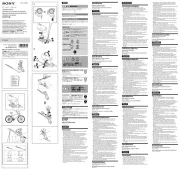
16 September 2025
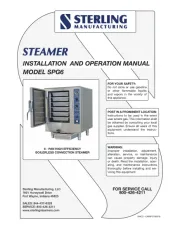
16 September 2025

16 September 2025
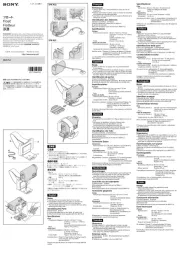
16 September 2025
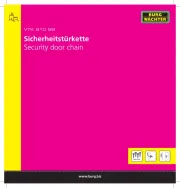
16 September 2025
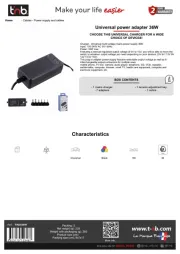
16 September 2025
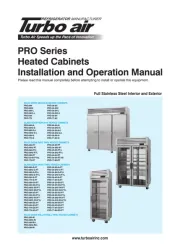
16 September 2025
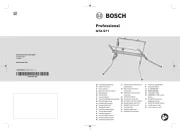
16 September 2025
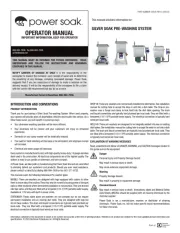
16 September 2025
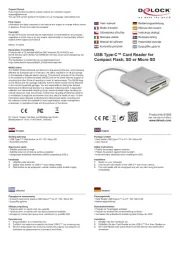
16 September 2025